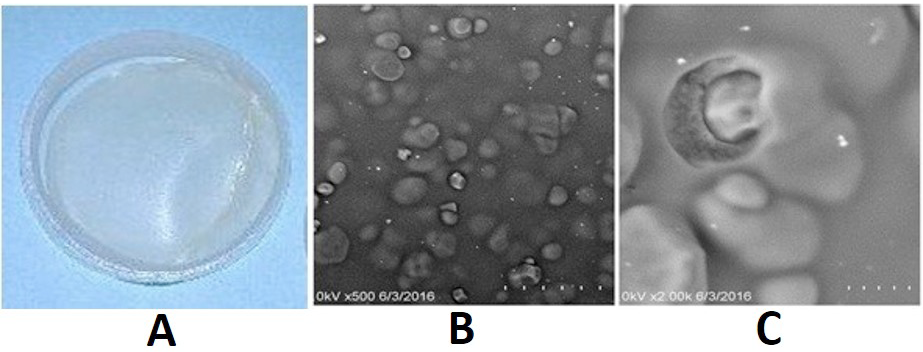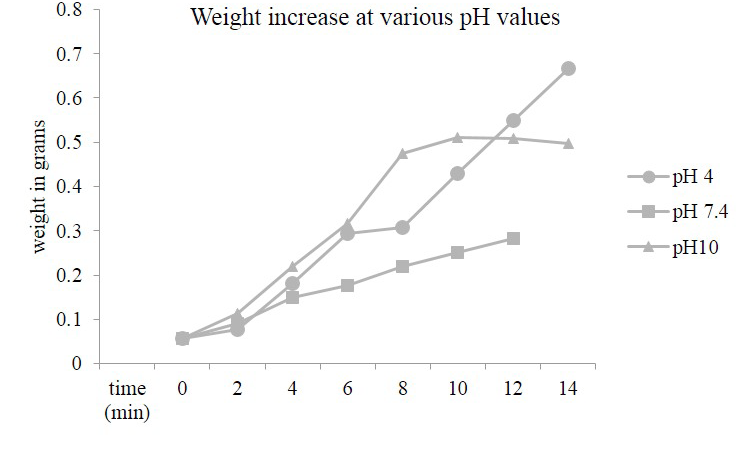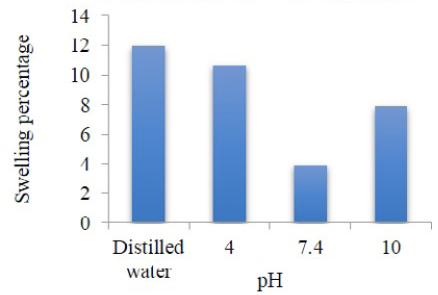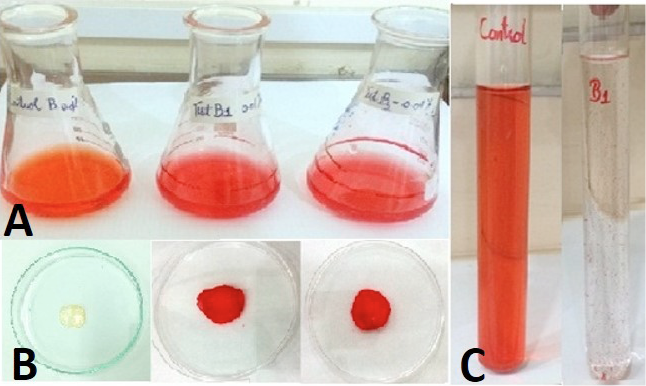Synthesis and Application of Chitosan-Starch Based Nanocomposite in Wastewater Treatment for the Removal of Anionic Commercial Dyes
Synthesis and Application of Chitosan-Starch Based Nanocomposite in Wastewater Treatment for the Removal of Anionic Commercial Dyes
Amtul Jamil Sami1*, Madeeha Khalid1, Sara Iqbal1, Maira Afzal1 and A.R. Shakoori2
Chitosan-starch nanocomposite (A). Scanning electron micrograph of Chitosan-starch nanocomposites at 500X magnification (B) and Nanocomposite at 2000X magnification (C)
Effect of different pH on weight increase of starch chitosan nanocomposite over a period of 14 min
Effect of pH on swelling percentage of chitosan starch nanocomposite. At acidic pH swelling degree is high as compared to neutral and basic pH
A shows three flasks with nano-composite immersed in 0.015 mM solution of congo red dye. The flask on left side is control while in the middle and right side are test B1 and B2, respectively. B shows three petri plates with the nano-composite before treatment in the left plate and nano-composite separated from test B1 (middle plate) and test B2 (right plate) after 12 h showing adsorption of congo red dye. C shows solution from test B1 in the right test tube and the control (left test tube) of congo red solution after dye removal by flocculation (12 h treatment). The test B1 shows showing significant dye removal as compared to control. Now-a-days Congo red is not commonly used in textile and dye industry but in the presented work congo red is used because it is well characterized for its physical and chemical properties and therefore is used as a model for anionic dyes.
The figures A, B, C shows the separation of the commercial dyes from the waste water after treatment with chitosan starch based nanocomposites. The flocculation was removed by filtration. In each case dye particles are visible on filter paper (A ii, B ii, C ii). The filtrate in the test tube (A iii, B iii, C iii) clearly shows the removal of dyes from commercial samples. Nano composites before and after treatment are also shown underneath the test tubes.















